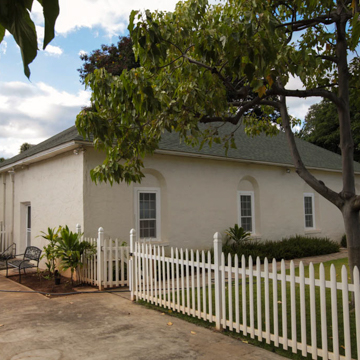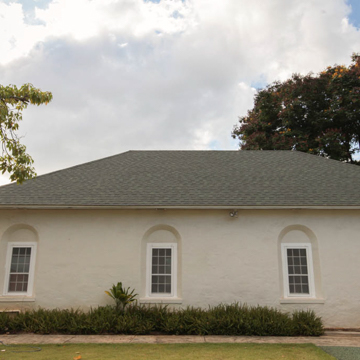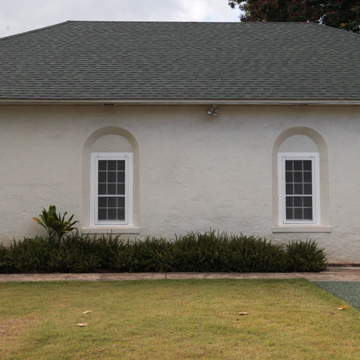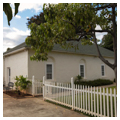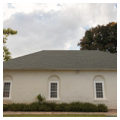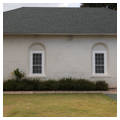A one-room missionary schoolhouse stands at the rear of the church grounds and is currently utilized as a preschool. One of only two known adobe buildings remaining in Hawaii, this simple structure is a startling reminder that in the 1840s at least 50, if not 70, percent of Honolulu's non-thatch buildings were of this material. Originally, the roof was thatched and most likely had a different pitch; the clay plastered, thirty-inch-thick walls were whitewashed. In 1920, the empty dilapidated building was refurbished as part of the missionary centennial celebration for use by the Free Kindergarten and Children's Aid Society. At that point, the frame kitchen was added to the makai end and the walls were stuccoed. Today the interior walls are plastered; however, a small wooden door may be opened to view the original adobe wall.
You are here
Adobe Schoolhouse
If SAH Archipedia has been useful to you, please consider supporting it.
SAH Archipedia tells the story of the United States through its buildings, landscapes, and cities. This freely available resource empowers the public with authoritative knowledge that deepens their understanding and appreciation of the built environment. But the Society of Architectural Historians, which created SAH Archipedia with University of Virginia Press, needs your support to maintain the high-caliber research, writing, photography, cartography, editing, design, and programming that make SAH Archipedia a trusted online resource available to all who value the history of place, heritage tourism, and learning.







